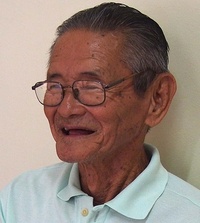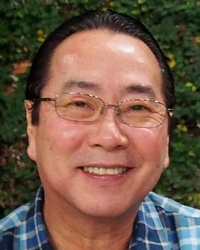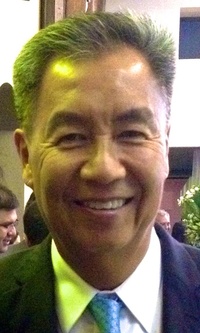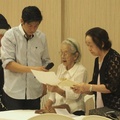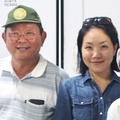Last year, various events were held in both countries to commemorate the 120th anniversary of the establishment of diplomatic relations between Japan and Brazil. Various events were also held in various places here in the Amazon, and I believe that Japan has become more well-known in Brazilian society than ever before. I was lucky to be able to participate in many of these milestone years that occurred during my term of office. However, this was not the only milestone year in my post in Belém.
Over the past year and a half, I have participated in three commemorative ceremonies: the 85th anniversary of Japanese immigration to the Amazon (2014), the 50th anniversary of the Japanese-Brazilian Amazonia Support Association (2015), and the 30th anniversary of the Japanese Chamber of Commerce in Para (2015). For me, these are not just events held at my posting site, but also events that left a strong impression on me as they were related to the people I met.
About a month after arriving in Belem, I went on a business trip to the suburban town of Tomé-Açu for the first time to observe a class at a Japanese language school. I had the opportunity to meet and talk with Gen Yamada, a member of the first group of immigrants to the Amazon. Yamada is one of the few survivors of the 1929 immigrants.
The first immigrants (189 people from 43 families, including the Yamada family) arrived at the Tome-Acu settlement (formerly the Akara colony). 2,104 people settled there before the war, but the initial goal of cacao cultivation did not go well, and most of them moved away due to the spread of malaria. After the war, the settlement grew significantly with pepper cultivation. At its peak in the late 1950s, Yamada says he had a good harvest. However, disease in the 1970s forced him to switch to other crops. Yamada is not alone; there are many people whose lives have changed dramatically because of pepper, for better or worse. From the 1950s to the 1970s, many Japanese people settled in Belém and other areas in the north of the country, in addition to Tome-Acu, and the current population of Japanese people in the Amazon is said to be around 50,000.
The northeast, where more than half of them live, is home to a large number of Japanese medical institutions, including hospitals and nursing homes with Japanese-speaking doctors and staff. The organization that oversees this is the Japan-Brazil Amazonia Aid Association, which celebrated its 50th anniversary last year. In 1965, it rented a room in the Japan-Brazil Association's office and started out as a small clinic called the Amazonia Japanese Immigrant Aid Association. After being approved as a public interest organization in 1972, it adopted its current name in 1974. It operates the Amazonia Hospital in the city of Belem, the Crossroads Amazonia Hospital in Tomé-Açu, and a welfare home (nursing home) in the city of Ananindeua, next to Belem. When you're living in an unfamiliar place, there's nothing more lonely than getting sick, but it's reassuring to have a hospital where Japanese is spoken.
I have been examined by Dr. Yuji Ikuta, a doctor at the Amazonia Hospital and president of the Pan-Amazonian Japan-Brazil Association, on several occasions. The association office and my workplace are in the same building, so I often meet with the doctor and he sometimes recommends medicines to me at the office. I feel a special connection with Dr. Ikuta, as I was in charge of his Japanese language classes when his son came to Japan for training.
There is one thing you will see in any town in the state of Pará. It is a supermarket called "Y.YAMADA". It is run by Yamada Fernando, who is the third generation owner. Since 2009, he has served as chairman of the Japanese Chamber of Commerce of Pará. It was founded in 1985, with his father, Junichiro, as its first chairman. At the time, there were 30 member companies, but now there are 55. The chamber's main activities are acting as an intermediary for members to contact the government, provide economic information, and hold lectures and seminars.
I had met Fernando often since I first arrived here, but I was hesitant to talk to him as he is the president of Yamada Supermarket and chairman of the Brazilian Supermarkets Association, and I missed the chance many times. It wasn't until about six months after I arrived here that I finally mustered the courage to talk to him. Since then, he has always greeted me with a gentle smile, and he even invited me to his 30th anniversary ceremony. I now realize once again that reaching out is the first step in building relationships.
I have participated in many events since coming here, but these three ceremonies in particular hold a special meaning for me, as I was able to celebrate a milestone year in our long history with people I have met through fate. At the same time, through these events, I was able to reaffirm the bond I have with you all.
New encounters are born in these types of places, and as people and places come together, bonds grow. I am looking forward to seeing how far my bonds will expand in the remaining six months of my term.
© 2016 Asako Sakamoto


